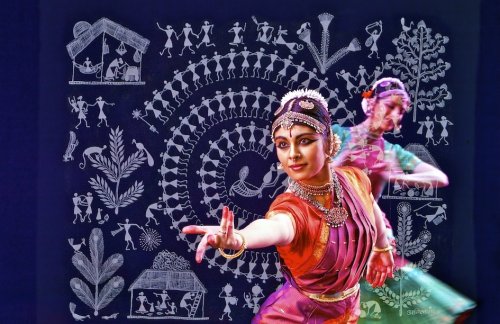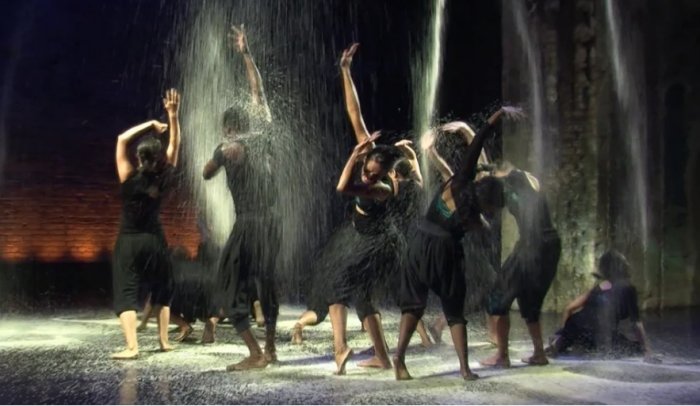
|   |

|   |
 e-mail: arshiyasethi@gmail.com Dance stories from around the world October 24, 2019 New series in my column 'Soch' Background I have been travelling internationally a lot since being awarded the post doctoral Fulbright. The largest chunk of these travels was the Fulbright year itself in 2017-2018, when I was at the University of Minnesota, Twin cities Campus. I lived in Minneapolis which has become a big hub of art in the mid west region of America. Dance was the constant subtext of the year I spent there. Subsequently, I attended several dance conferences, like the annual Dance Studies Association's conference, and engaged with the most recent dance scholarship. The Dance Studies Association conference happened at the Ohio State University at Columbus, Ohio in 2017, at the University of Malta, Malta, 2018 and at Northwestern University, Evanston, Illinois, in August 2019. Each occasion allowed me to hear such brilliant scholarship, and realise how the field was both widening and deepening. Many of these papers encouraged me to relook at areas of dance that I had lived with but never applied critical understanding to. It has generated a new body of scholarly work from my pen. The Columbus, Ohio conference was very important for the Dance Studies Association (DSA) and for me personally. It was important for the Dance Studies Association because the Association was formally born there, with the merger of the far older bodies- Society of Dance History Scholars (SDHS) and the Congress on Research in Dance (CORD). Given the fact that SDHS, a professional organization for dance historians in the United States and worldwide, had by then been in existence since 1978 and the far older CORD, in existence since 1964, DSA can be seen as both an old and a young association. It really doesn't matter because DSA is running with the best of both legacies. Personally, Columbus, Ohio was important because I presented on a panel on Aesthetic Nationalism. That is not why it was important. The story of its importance follows. One of my co-panellists was Tani Sebro, a Professor of Political Science. Tani presented on the Shan people who after escaping persecution in Myanmar, have taken refuge in Thailand, where even though denied both citizenship and formal refugee status, they have found the space to recover their dance practice. I was fascinated by this story of the exilic Shans, mostly because they were descendants of the original population from which one branch had made its way to India in the early 13th century and are known to us in India as the Ahoms. The Ahoms played an important role in the landscape of my doctoral research. Realising that both Prof. Sebro and I are trained in Political Science, I impulsively, suggested that we co-edit a publication on 'Dance and the Nation', but because we are dealing not just with an unexplained rise of nationalism worldwide but also in oblique ways in which the nation choreographs it effects, we titled it as "Dance Under the Shadow of the Nation" and looked at dance on the umbra and penumbra of nations. That effort has finally borne fruit and it comes out in December 2019, in the Dance Studies Association's annual series, 'Conversations across the field of Dance.' The essays presented in this issue demonstrate that the study of nations and nationalism remains a key subject for scholars who take seriously the implications of struggles over power, territory, and cultural practices. The diversity of nations and their transnational linkages that are presented in this collection allows for an examination of how dance and performance become important projects of the nation, controlling memory, history and populations - by linking geopolitics to the bodies of practitioners. While the concept of aesthetic nationalism, serves as a salve for colonial injuries as it involves the notion of a culturally authentic past focused on a genealogy of earlier values, has been a preferred route of post colonial nations, the range of essays reveals a far bigger footprint of nation and its derivatives. From the critique of empires past and present challenges of globalisation by reclaiming through the addition of unique elements of indigeneity, that serve as geographical indicators (GI), to navigating state ideologies through aesthetic experimentations on television, to what happens to dance and what dance can do in crucibles of violence like Palestine and Sri Lanka, is some of the fare contained in this publication. I do hope you will get a chance to read it.  Katha Dance Theatre Minneapolis is also home to three significant dance companies that work with Indian dance forms and have made a name for themselves. Yet each is arranged on a broad spectrum of creative production, and each feeds a very different need of the city. Rita Mustafi's Katha Dance Theatre is one of them, and has the distinction of being Minnesota's first Asian Indian dance company. A disciple of Pandit Birju Maharaj, Rita Mustafi began teaching in the Twin Cities in 1978 and in 1987, created a professional company and school of Kathak dance- the Katha Dance Theatre. It recently celebrated Birju Maharaj's ongoing 80th birthday, and had the tabla legend Zakir Hussain accompany him.  Ragamala Dance Company (Photo: Ed Bock) The third company, Ananya Dance Theatre (ADT), set up by the indefatigable Ananya Chatterjea, is what I would like to conclude this opening column in the new series "Dance Stories from Around the World" with. The reason is that with its work described as "People powered dances of Transformation" the ADT is breaking new ground. The ADT is the leading creator of Contemporary Indian Dance in the global arts and social justice movement. It has not just created a new language of dance uniquely its own, trademarked as Yorchha- a combination of Yoga, Odissi and Chhau, it has radically reframed the ground on which they dance, by taking up stories of social justice as seen by the lens of women of colour. Thus, they have worked on themes of environmental justice, systemic violence and the work women do in response.  Ananya Dance Theatre  Dr. Arshiya Sethi, trained in Kathak, has served as dance critic, commentator, institution builder for the arts, having created both tangible and intangible institutions and equities. She has been a Fulbright Arts Fellow (2003-2004) and a post doctoral Fulbright (2016-2017). Her doctoral work has been on the link between politics and dance in the case of Sattriya. She is presently working on the intersection of dance and activism / social justice as well as Indian dance in the diaspora. Post your comments Please provide your name and email id when you use the Anonymous profile in the blog to post a comment. All appropriate comments posted with name & email id in the blog will also be featured in the site. |